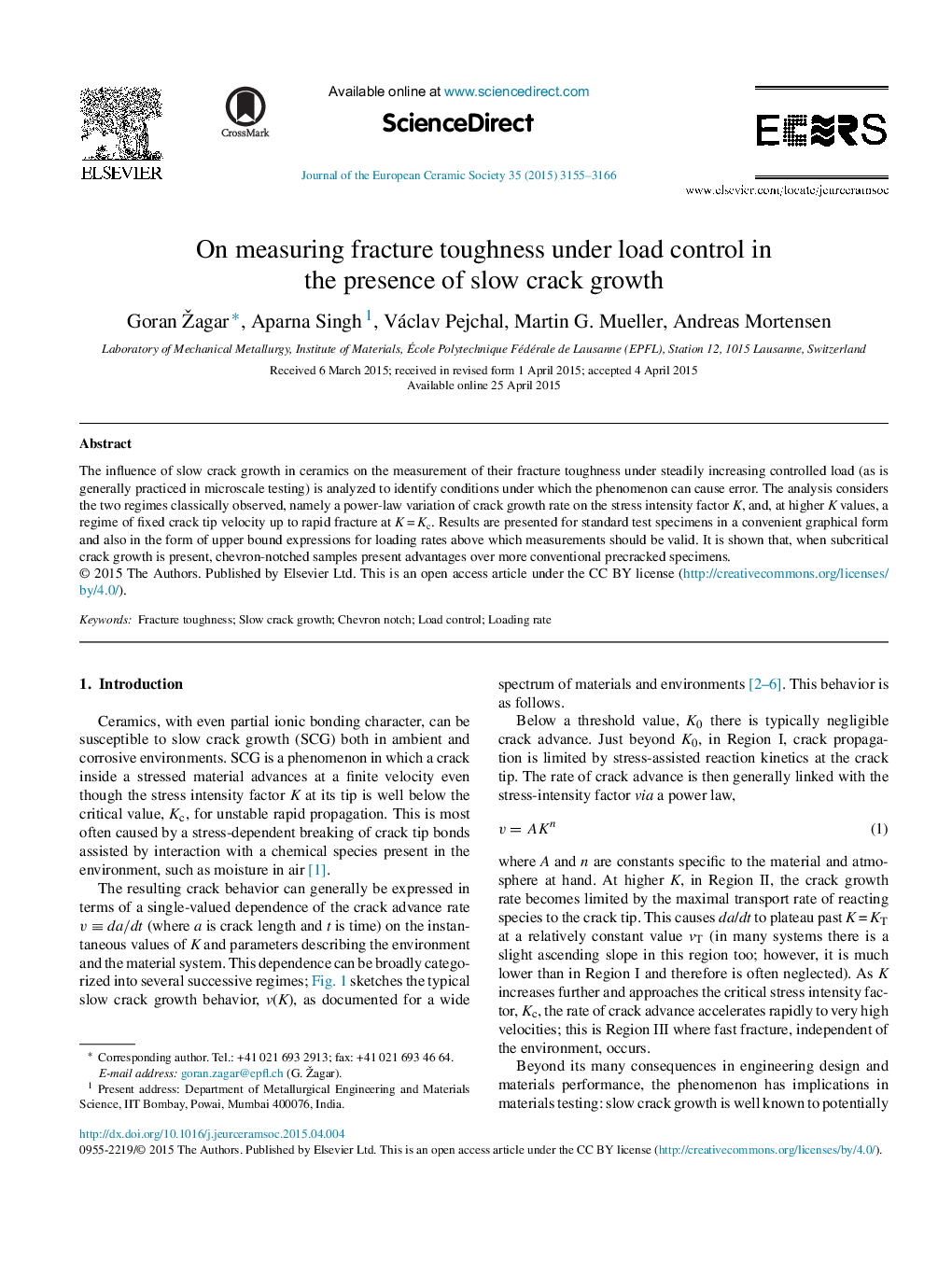| Article ID | Journal | Published Year | Pages | File Type |
|---|---|---|---|---|
| 10629383 | Journal of the European Ceramic Society | 2015 | 12 Pages |
Abstract
The influence of slow crack growth in ceramics on the measurement of their fracture toughness under steadily increasing controlled load (as is generally practiced in microscale testing) is analyzed to identify conditions under which the phenomenon can cause error. The analysis considers the two regimes classically observed, namely a power-law variation of crack growth rate on the stress intensity factor K, and, at higher K values, a regime of fixed crack tip velocity up to rapid fracture at KÂ =Â Kc. Results are presented for standard test specimens in a convenient graphical form and also in the form of upper bound expressions for loading rates above which measurements should be valid. It is shown that, when subcritical crack growth is present, chevron-notched samples present advantages over more conventional precracked specimens.
Related Topics
Physical Sciences and Engineering
Materials Science
Ceramics and Composites
Authors
Goran Žagar, Aparna Singh, Václav Pejchal, Martin G. Mueller, Andreas Mortensen,
